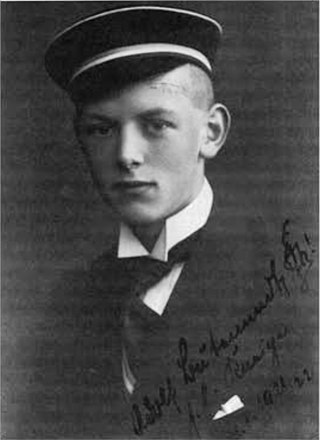
Adolf Friedrich Johann Butenandt was a German biochemist. He was awarded the Nobel Prize in Chemistry in 1939 for his "work on sex hormones." He initially rejected the award in accordance with government policy, but accepted it in 1949 after World War II. He was President of the Max Planck Society from 1960 to 1972. He was also the first, in 1959, to discover the structure of the sex pheromone of silkworms, which he named bombykol.

The Battle of St. Jakob an der Birs was fought between the Old Swiss Confederacy and French mercenaries, on the banks of the river Birs. The battle took place on 26 August 1444 and was part of the Old Zürich War. The site of the battle was near Münchenstein, Switzerland, just over 1 km outside the city walls of Basel, today within Basel's St-Alban district.
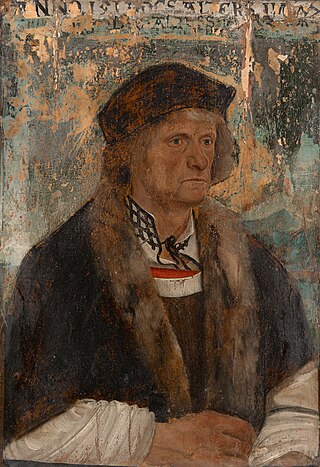
Johann Amerbach was a celebrated printer in Basel in the 15th century. He was the first printer in Basel to use the Roman type instead of Gothic and Italian and spared no expense in his art.

The Kunstmuseum Basel houses the oldest public art collection in the world and is generally considered to be the most important museum of art in Switzerland. It is listed as a Swiss heritage site of national significance.
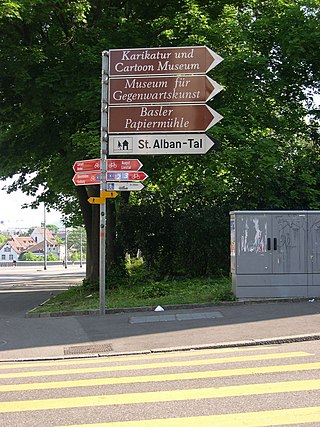
The Basel museums encompass a series of museums in the city of Basel, Switzerland, and the neighboring region. They represent a broad spectrum of collections with a marked concentration in the fine arts and house numerous holdings of international significance. With at least three dozen institutions, not including the local history collections in the surrounding communities, the region offers an extraordinarily high density of museums compared to other metropolitan areas of similar size. They draw some one and a half million visitors annually.
Otto Hans Abt was a Swiss painter.

Irène Zurkinden was a Swiss painter.

Hermann Scherer was a German-speaking Swiss Expressionist painter and sculptor.

Christophe Moehrlen, pen name: Christoph Irenius, was a Swiss French Protestant pastor of German origin, schoolteacher and author of children's literature.

Karl Aegerter was a prolific Swiss painter, draftsman, etcher, muralist, illustrator, designer and sculptor. Now in numerous private and public collections, Aegerter's works are often likened to those of Edvard Munch.
Felix Stähelin was a Swiss historian of Basel.
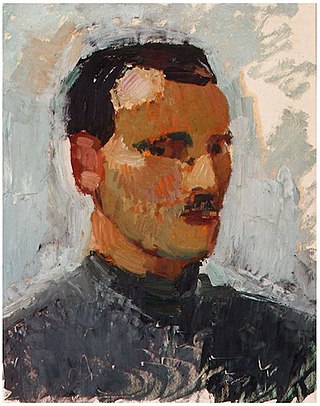
Werner Neuhaus was a Swiss painter, printmaker and draftsman. He was a founding member of the Swiss Expressionist Rot-Blau group.
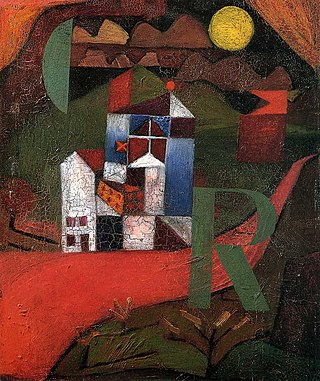
Villa R is an oil-on-carton painting from 1919 by the Swiss-born German artist Paul Klee.
Carl Christoph Friedrich Bernoulli was a Swiss art dealer and interior designer from the Bernoulli family of scholars.
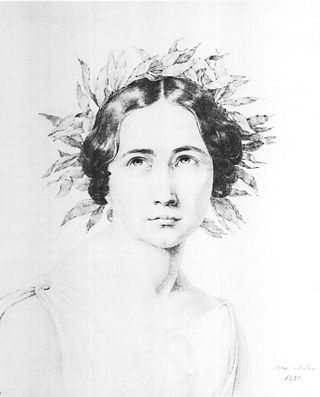
Emilie Linder was a Swiss painter and art patron.
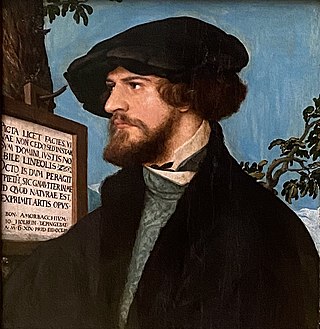
The Portrait of Bonifacius Amerbach is a painting by the German master of the Renaissance Hans Holbein the Younger. It is deposited in the Basler Kunstmuseum as part of the Amerbach Cabinet. It is painted in mixed technique on pine panel and measures 29.9 cm x 28.3 cm.
Jean-Christophe Ammann was a Swiss art historian and curator.

Portrait of the Artist's Family is a portrait of the family of the painter Hans Holbein the Younger by the artist himself. It depicts Holbein's wife Elsbeth Binzenstock, their son Philipp and their daughter Katharina. Holbein painted it during his stay in Basel after his return from England. It was painted, between 1528 and 1529, on paper and glued on wood.

In 1939 the Gallery Fischer in Lucerne organized an auction of degenerate art confiscated by the Nazis. The auction took place on 30 June 1939 in the Grand Hotel National. The auction received considerable international interest, but many of the bidders who were expected to attend were absent because they were worried the proceeds would be used by the Nazi regime.

Niklaus Stoecklin was a Swiss painter and graphic artist. He is regarded as a Swiss exponent of New Objectivity and Magic Realism, and at least with his early works numbers among their international co-founders. He was also a poster designer of international renown.















